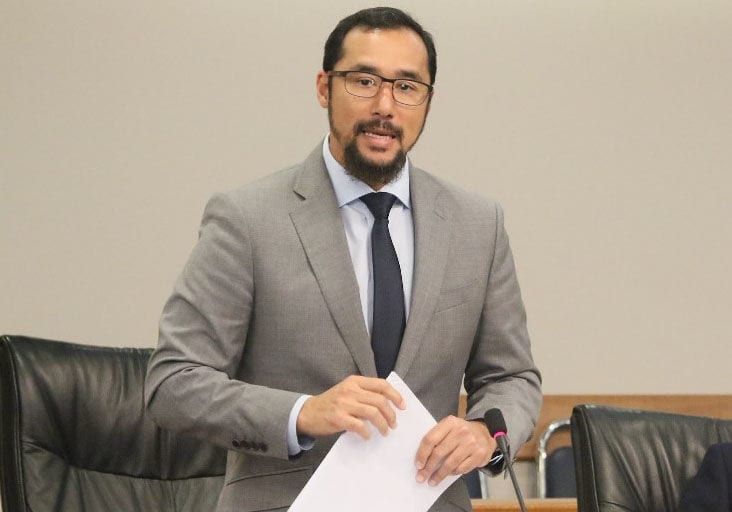Trinidad and Tobago’s Minister of Energy and Energy Industries, Stuart Young, said the country is advantaged in terms of its ability to attract investment in gas exploration and development, due to its established gas infrastructure. During an early May press conference, he contrasted this state of affairs with what obtains in Guyana and Suriname.
The Minister was asked whether he sees the emergence of Trinidad’s two sister States in the petroleum sector as a competitive challenge.
“I think we in Trinidad and Tobago have to understand, and I’ll try to be very delicate here, the Guyana and Suriname situation,” Young began.
He said while Guyana is experiencing an oil boom, a gas industry is absent. “Guyana is producing significant – and I’m happy for them – amounts of oil. They don’t as yet have any gas industry. That is something the government there has been trying to develop. Suriname has not begun any production. In fact, they are working hard to get FID for first production of significant amounts of potential oil.”

As Guyana, Suriname gas reserves mount, standalone development is on the horizon | OilNOW
Trinidad and Tobago, on the other hand, boasts an extensive and functional infrastructure capable of processing natural gas into various products. Young pointed out, “There are very few countries in the world, that are as small as we are, that you can produce LNG, ammonia, methanol, urea, UAN, from natural gas. And we have plants here, that are all good working plants, that can take natural gas.”
The Minister stressed the economic efficiency of Trinidad’s infrastructure, noting that new provinces like Guyana and Suriname would require substantial investment to develop similar facilities. “In a new province, you have to take decisions to build the infrastructure to bring the gas, because all of that gas is offshore. You have to bring it onshore. You have to put down plants. You have to put down infrastructure. You have to put down shipping ports, to be able to ship the products, etc. Those cost billions and billions and billions of dollars,” he said.
Trinidad has about 10 years of gas production left based on less than 12 trillion cubic feet (tcf) of natural gas reserves. Young said during a more recent May 29 conference: “We currently utilize about one trillion cubic feet of gas. So, when we did the projections, if we just stay with that, that will be about another 10 years of life as we currently do with our gas production.”
He mentioned that the energy sector could be extended if an additional 10 tcf of gas, which is yet to be found and commercialized, is tapped. The figures are the results of non-associated gas audits conducted by DeGolyer and MacNaughton, which estimated Trinidad and Tobago’s unrisked technically recoverable quantities of proven (P1) and contingent (C1) gas at 11.498 tcf as of a 2022 audit.
The twin-island nation has been in the oil business for over a century. However, gas has overtaken in recent decades and has become a staple of reliance for the Trinidad economy. The rate of production is on a gradual decline. The government is pursuing partnerships with Venezuela to increase gas output.
Meanwhile, significant gas reserves have been discovered offshore in Guyana and Suriname.
ExxonMobil has found 17 trillion cubic feet of gas in the Stabroek Block. It is expected to tap associated gas for the first time in 2025. A potential non-associated gas development could start production as early as 2029/2030. Meanwhile, the company produces more than 600,000 barrels of oil per day (b/d) and expects to produce more than 1.3 million b/d by 2027.
Wood Mackenzie estimates that Suriname has 12.5 trillion cubic feet of gas reserves. It said a gas development could happen at Block 52 as early as 2031. An oil development by TotalEnergies and APA is in the planning stages. First oil is planned for 2028, with a target output of 200,000 b/d.